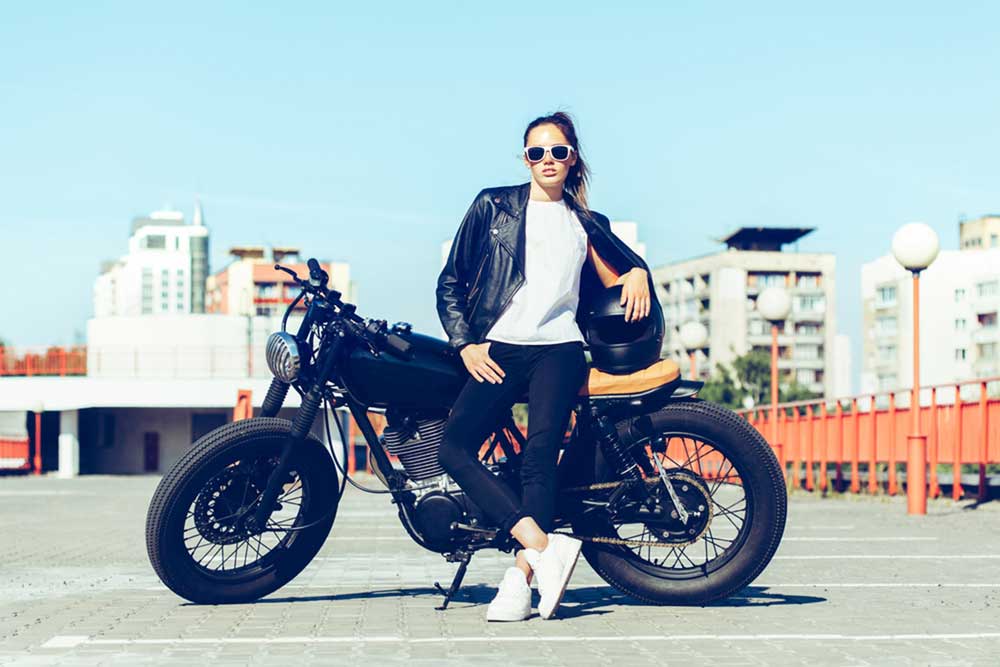Temperatures are rising all over the U.S. due to the summer season, and that can affect the way you ride. You’re bound to break a sweat regardless of how far or how long you’re traveling, which can make it uncomfortable to ride. The heat will also put excess stress on your body, which can affect your ability to make decisions behind the wheel. Riding in hot weather can be just as dangerous as riding in the rain, according to legal professionals who manage motorcycle injuries. But this is also one of the best times to ride. So, what can you do to protect yourself from extreme heat? Use these essential summer riding tips to stay safe all season long.
1. Use Wireless Communication
Summer is the perfect time of year to go on a motorcycle tour with your best pals. But you need to be able to communicate with your companions without distracting yourself from the road. This becomes even more important when you factor in the added heat. The weather will affect each person differently. Older folks, those with respiratory issues and overweight individuals may have trouble riding for long periods when it’s too hot outside. Everyone has their limit, and that’s okay. What’s important is that you recognize when it’s time to pull over and take a break.
Use a motorcycle helmet Bluetooth headset to wirelessly connect with everyone in your group. With a range of one mile, you can easily keep the conversation going without looking away from the task at hand. Just speak into the device to reach anyone that’s in range. You and your companions can keep tabs on each other while you ride. Encourage each other to speak up if they need to get out of the sun so you can all pull over when necessary. Watch out for signs of heat stroke, including nausea, fatigue and erratic driving. Make sure you can still hear important traffic sounds when using the headset. Find one with JBL helmet speakers to keep the conversation going.
2. Cover Up
The sun can be a hazard even in mild weather. You can start to develop sunburn in just 30 minutes when your skin is exposed to direct sunlight. Your best defense against the sun is to wear long sleeves and pants. Keep your skin covered as much as possible — even when there are clouds in the sky. Wearing sunscreen will help you block harmful UV rays. Keep a bottle in your bag and be sure to reapply every 80 minutes as directed.
3. Wear Moisture-Wicking Clothing
Wearing all that clothing can leave you baking in the heat if you don’t wear the right kind of fabric. Choose breathable fabrics that will dry quickly when you sweat. Synthetic fabrics like polyester tend to be the best choice for the summer. It’s light and relatively inexpensive. Go with a looser fit that won’t cling to your skin. However, your clothing shouldn’t be so large that it whips around in the wind. The same idea applies to your riding gloves. Find a pair with openings along the edges to let air pass over your skin so your hands aren’t drowning in sweat. If you have a full-face helmet, open the vents to increase the airflow.
4. Stay Hydrated
It’s important to drink water often when you ride a motorcycle. Your body is getting a workout even if it seems like you’re sitting still. Driving dehydrated can impair your ability to operate the motorcycle, not unlike riding under the influence. The heat will cause you to sweat, which will only deprive your body of precious moisture. You can stock up on water by drinking a large 12 oz. glass about 60 minutes before you depart. Be sure to drink more water every time you pull over. If you plan on taking long road trips and won’t be able to access your water bottle for long periods of time, wear a hydration vest under your clothing to take small sips while you ride.
5. Take Breaks
Riding in the summer means making time for more pit stops, so you can stay hydrated and get out of the sun. Try to spend as much of your free time in the air conditioning to lower your body temperature. Pad your riding schedule to give yourself more time to reach your destination, and plan to stop around every two hours or less, depending on your comfort level. You should never push yourself over the limit just to keep riding. Take a break and rest to make sure you are safe to ride.
Even the best protective gear won’t protect you from the scorching heat. It’s not safe to ride in temperatures above 100 degrees Fahrenheit. Check the thermostat before you leave and consider taking a fuel-efficient car instead of riding your bike when the temperature is in the triple digits. Avoid riding during the hottest times of the day, 11 a.m. to 2 p.m. You’ll be much more comfortable on your motorcycle if you wait to ride when the weather is just right.

